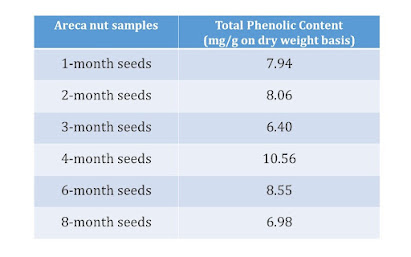As per the nationally representative cross-sectional study conducted
in 2016-17 by Tata Institute of Social Science (TISS), Mumbai with support from
Ministry of Health and Family welfare, Govt. of India, about 23.9% of the adult
population consume areca nut. This translates into approximately 22.38 crore
people consuming areca nut in one or the other form in 2016-17. Majority users
(13.29 crore) consumed areca nut with tobacco. As per the official documents of
TISS Mumbai, the survey was conducted in all 29 states and three union
territories (UTs) of India. The study involved the survey of 74,037 adults aged
15 and above. A multistage sampling design separately for rural and urban areas
was adopted. The overall response rate was 92.9%. The sampling was done independently
in each state/Union Territories, and it was done independently for urban and
rural areas.
Let us try to apply the similar calculation to the year 2020. The
total population of India was 138.88 crores in 2020. In this, the adult (between
15-65 years of age) population was 94.02 crores. As per the TISS survey data, 22.47
crores (23.9% adult population) must have consumed the areca nut in one or the other
form. Out of which, 13.34 crores were the habitual areca nut consumers with
Chewable tobacco. Rest (9.12 crores) consumed area nut vocationally.
Discussions with Gutkha/tobacco wholesale traders in
Hubli, Karnataka and retailers elsewhere, it was evident that those addicted to chewable tobacco
(Smokeless tobacco) consume Gutkha, Mawa, or Paan with tobacco, a minimum of 10
times a day. Each time, about 2.5 gram of areca nut is consumed which
translates into 25 grams per day. That amounts to 9.125 Kg of areca nut per
year. If we apply this calculation to 13.34 crore individuals who consume areca
nut with chewable tobacco, the amount of areca nut consumed would be 12,17,275
Tonnes per annum. Apart from this about 9.12 crore adults consume areca nut in
the form of Paan (Betel quid). If we assume, one Paan is consumed per day by
them, the total areca nut consumption would be 83,220 Tonnes per annum. Thus,
the total areca nut consumption by Indian population in 2020 was 13,00,495
Tonnes.
As per Food and Agriculture Organization of the United Nations (FAO)
data released in March 2022, the domestic production of India was 13,82,000
Tonnes in 2020. That shows, there was a surplus of 81,505 Tonnes of areca nut
in India in 2020. Perhaps, this was exported to the countries having a sizable areca
nut consuming population such as Pakistan, Nepal and Gulf nations. Several
records shows that India is the sole manufacturer of Gutka in the world and
Gutka is highly popular in those nations.
Most recent data indicates that the Chewable tobacco (smokeless
tobacco) users are much more than the 2016-17 estimate (TISS study). As per the
recent Lancet report, about 19.94 crore adults chew areca nut with tobacco in
India. If we consider this data, India would have consumed a whooping 18,19,525 Tonnes in 2022. India’s domestic production was 13,82,000
Tonnes in 2020. If we assume 15% year-on-year growth in the domestic production,
the areca nut production in 2022 would have reached 18,27,000 Tonnes. The
actual production figures are yet to be released by Directorate of Areca nut
and Spices Development, Calicut and Food and Agriculture Organization of the
United Nations (FAO).
References:
1. Singh P.K et al. (2021).
Areca nut consumption with and without tobacco among the adult population: a
nationally representative study from India. BMJ Open; 11: e043987.
doi:10.1136/bmjopen-2020-043987
2. Arakeri et al. (2023).
Unsuccessful ban on gutkha and need for tobacco control in India. The Lancet,
Vol 401, pp 1154.
3. Food and Agriculture
Organization of the United Nations data released officially in March 2022.
4. Directorate of Areca nut
and Spices Development, Calicut report published in June 2021.









